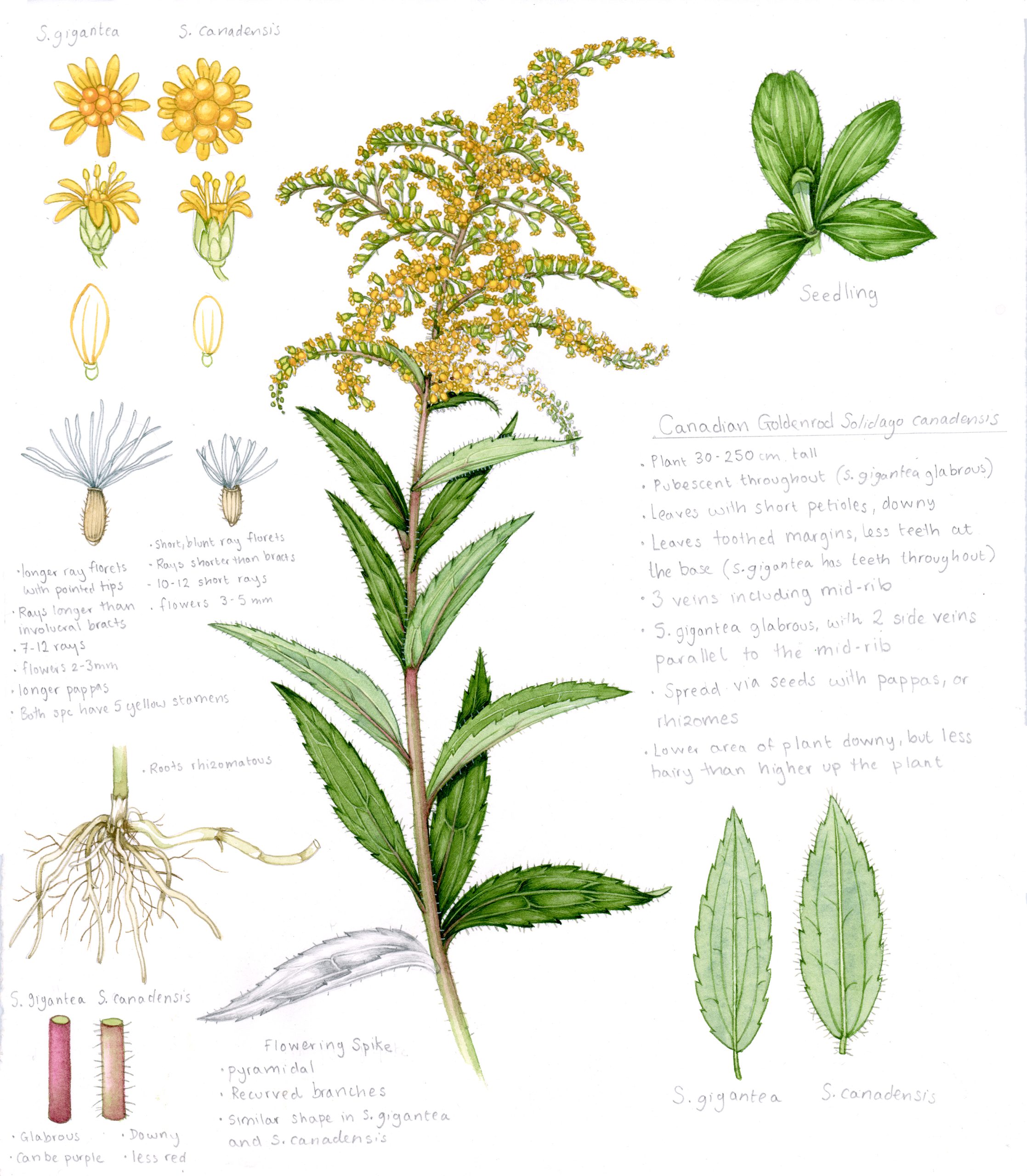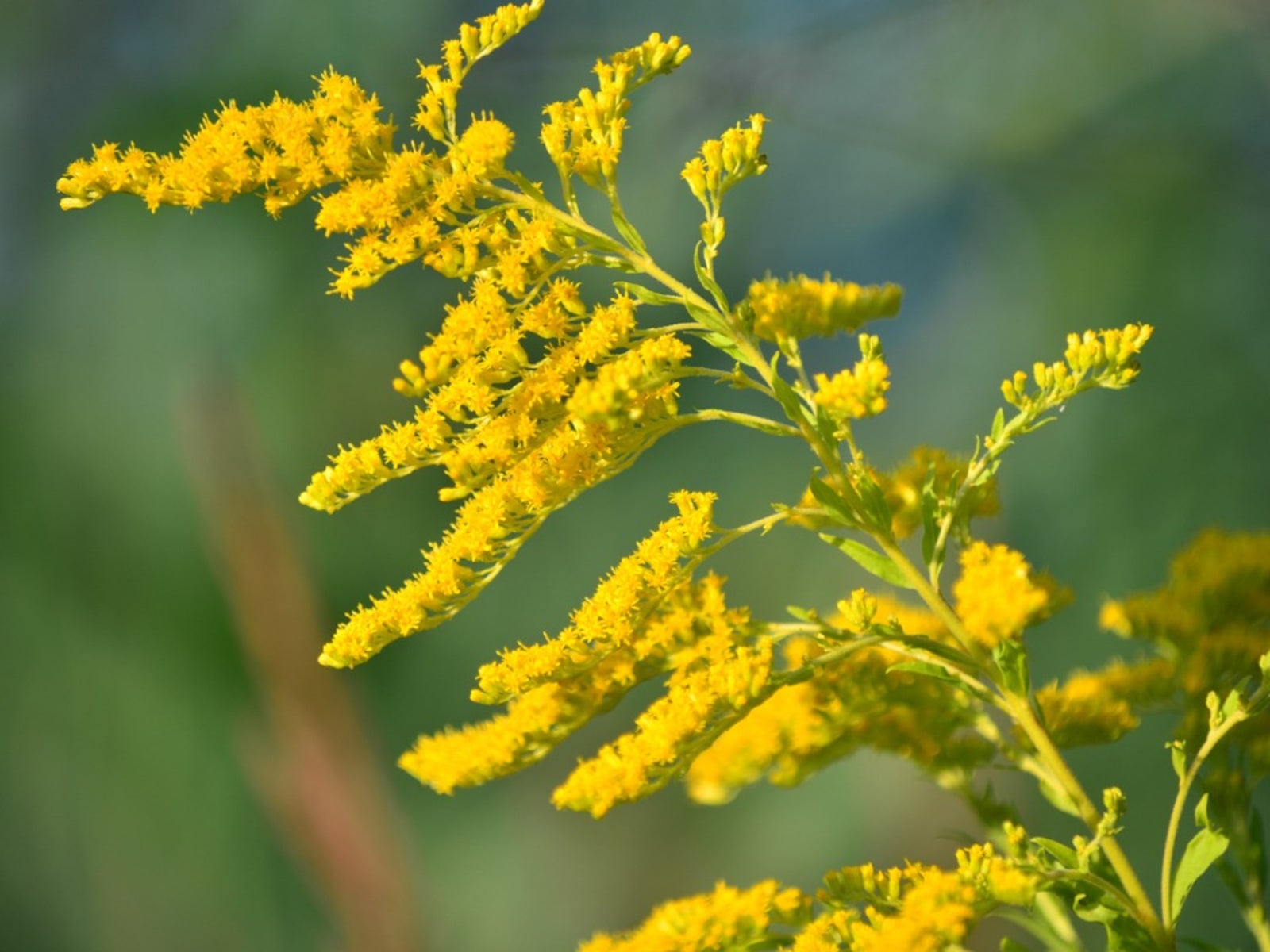The Goldenrod Plant: A Versatile and Beautiful Native
Goldenrod, a genus of flowering plants in the Asteraceae family, is a common sight in North American meadows, fields, and forests. Known for their bright yellow flowers and tall, slender stems, these plants have a long history of use in traditional medicine, food, and dye production.
Physical Characteristics
:strip_icc()/goldenrod-flowers-c53e25a7-33b377c2cfaf4b218dbc44c1dd117f7f.jpg)
Height: Goldenrod plants can vary in height from a few inches to several feet, depending on the species.
Ecological Importance
Goldenrod plants play a vital role in the ecosystem. They provide nectar and pollen for pollinators, such as bees, butterflies, and other insects. Additionally, goldenrod seeds are a food source for birds and small mammals. Some species of goldenrod are also important for erosion control and soil stabilization.

Traditional Uses
Goldenrod has been used for centuries in traditional medicine. Native Americans and early European settlers used various parts of the plant to treat a variety of ailments, including colds, flu, fever, and kidney problems. Some of the medicinal properties of goldenrod are attributed to its antioxidant and anti-inflammatory compounds.
In addition to its medicinal uses, goldenrod has also been used for food and dye production. The young shoots of some species can be eaten as a cooked vegetable, while the roots can be ground into a flour. Goldenrod flowers can also be used to make a yellow dye.

Cultivation and Care
Goldenrod is a relatively easy plant to grow in most gardens. It prefers sunny locations with well-drained soil. Goldenrod can be propagated from seeds or by dividing established plants. Once established, goldenrod requires minimal care. It is drought-tolerant and can withstand harsh weather conditions.
Common Species
There are many different species of goldenrod, each with its own unique characteristics. Some of the most common species include:
Tall goldenrod (Solidago altissima): This is one of the tallest species of goldenrod, reaching heights of up to 8 feet. It is a common sight in meadows and fields.
Conclusion
Goldenrod is a versatile and beautiful native plant that has been used for centuries by humans. It provides important ecological benefits and has a long history of use in traditional medicine, food, and dye production. Whether you are interested in its medicinal properties, its ecological importance, or its beauty, goldenrod is a plant worth knowing.
FAQs
1. Is goldenrod invasive?
While some species of goldenrod can be aggressive, most are not considered invasive.
2. Does goldenrod cause allergies?
Goldenrod is often blamed for causing allergies, but it is actually ragweed that is the culprit. Ragweed blooms at the same time as goldenrod, and its pollen is a common allergen.
3. How can I control goldenrod growth?
If you need to control goldenrod growth, you can remove it by digging up the plants or by applying herbicides.
4. Can I use goldenrod in my garden?
Yes, many species of goldenrod are suitable for gardens. They can add color and interest to your landscape.
5. What are the medicinal benefits of goldenrod?
Goldenrod has been used traditionally to treat a variety of ailments, including colds, flu, fever, and kidney problems. However, more research is needed to confirm its medicinal properties.